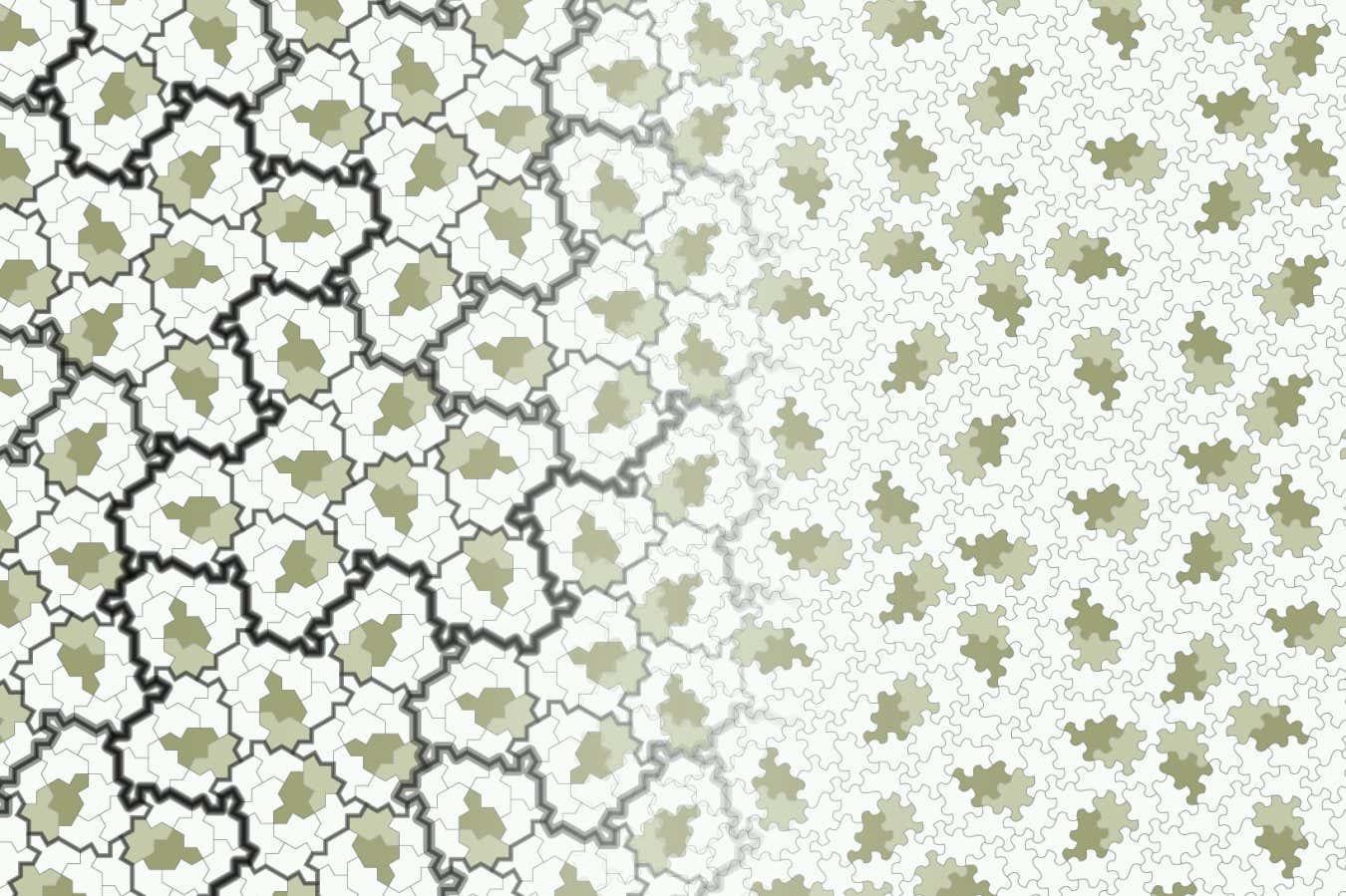An unsatisfying caveat in a mathematical breakthrough discovery of a single tile shape that can cover a surface without ever creating a repeating pattern has been eradicated. The newly discovered “spectre” shape can cover a surface without repeating and without mirror images.
The pattern on the left side is made up of the “hat” shape, including reflections. The pattern on the right is made up of round-edged “spectre” shapes that repeat infinitely without reflections
David Smith et al
Mathematicians solved a decades-long mystery earlier this year when they discovered a shape that can cover a surface completely without ever creating a repeating pattern. But the breakthrough had come with a caveat: both the shape and its mirror image were required. Now the same team has discovered that a tweaked version of the original shape can complete the task without its mirror.
Simple shapes such as squares and equilateral triangles can tile a surface without gaps in a repeating pattern. Mathematicians have long been interested in a more complex version of tiling, known as aperiodic tiling, which involves using more complex shapes that never form such a repeating pattern.
The most famous aperiodic tiles were created by mathematician Roger Penrose, who in the 1970s discovered that two different shapes could be combined to create an infinite, never-repeating tiling. In March, Chaim Goodman-Strauss at the University of Arkansas and his colleagues found the “hat”, a shape that could technically do it alone, but using a left-handed and right-handed version. This was a slightly unsatisfying solution and left the question of whether a single shape could achieve the same thing with no reflections remaining.
The researchers have now tweaked the equilateral polygon from their previous research to create a new family of shapes called spectres. These shapes allow non-repeating pattern tiling using no reflections at all.
Until now, it wasn’t clear whether such a single shape, known as an einstein (from the German “ein stein” or “one stone”), could even exist. The researchers say in their paper that the previous discovery of the hat was a reminder of how little understood tiling patterns are, and that they were surprised to make another breakthrough so soon.
“Certainly there is no evidence to suggest that the hat (and the continuum of shapes to which it belongs) is somehow unique, and we might therefore hope that a zoo of interesting new monotiles will emerge in its wake,” the researchers write in their new paper. “Nonetheless, we did not expect to find one so close at hand.”
Sarah Hart at Birkbeck, University of London, says the new result is even more impressive than the original finding. “It’s very intellectually satisfying to have a solution that doesn’t need the mirror image because if you actually had real tiles then a tile and its mirror image are not the same,” she says. “With this new tile there are no such caveats.”
For more such insights, log into www.international-maths-challenge.com.
*Credit for article given to Matthew Sparkes*


